With the usual fanfare, the U.S. Department of Agriculture (USDA) released its most recent annual Pesticide Data Program (PDP) report with data gathered from the agency’s annual testing program during 2021. The test selections are limited and the foods and commodities tested are rotated each year. The program includes tests for an extensive but incomplete list of EPA-approved agricultural pesticides and their metabolites as well as certain contaminants.
Most people don’t consider that butter could be contaminated with pesticides so we took a deep dive into the test results for conventional butter and compared the findings to the previous report on 2013 butter testing.
In 2021, the Pesticide Data Program analyzed 177 butter samples. PDP detected 15 different residues for 14 distinct pesticides (15 including different metabolites) in the butter samples. In the previous butter testing in 2013, nearly 4 times as many butter samples were tested (688) and only 8 pesticides were detected.
Six of the 15 pesticide residues detected in 2021 were found in more than 5% of the samples tested. In 2013, only 5 of the 8 pesticides were found in more than 5% of the samples. From year to year, the percentage of samples contaminated by each of the most prevalent pesticides rose. For example, in 2013, only 15.7% of the 688 samples tested were found to contain Bifenthrin, a neurotoxic pyrethroid insecticide. In 2021, 36.7% of the 177 samples tested were found to contain Bifenthrin.
The average number of pesticides per sample increased from 1.43 in 2013 to 2.14 pesticides per sample in 2021.
The most prevalent pesticides, found in over 5% of the samples, were DDE (considered a contaminant – a metabolite of DDT, banned in 1972), Novaluron, Permethrin, Bifenthrin, Piperonyl Butoxide and Cyhalothrin. Also present, in less than 5% of the butter samples, were Ametoctradin (V-1), Buprofezin, Difenoconazole, Diphenylamine (DPA), Fenpyroximate, Flubendiamide, Methoxyfenozide, Pyraclostrobin, and Thiabendazole.
What are the health risks associated with the pesticides and contaminants found?
Three of the most prevalent pesticides detected in butter in 2021 (Bifenthrin, Cyhalothrin and Permethrin and its metabolites) are synthetic, neurotoxic pyrethroid insecticides. A fourth, Novaluron, is an insecticide linked to reproductive toxicity in mammals. A study published in 2021 linked Novaluron to detrimental effects on sperm functions. And DDE, the metabolite of DDT, is a carcinogen.
Contaminants
In addition to pesticides that are registered for use on the tested food or crop, the USDA also tested for pesticides considered “Environmental Contaminants” and related metabolites…
DDT is a fat-soluble, highly toxic herbicide that was banned in 1972. The herbicide and its metabolites are linked to cancer, with studies linking it specifically to breast cancer, even generations after exposure. Sadly, DDE, a metabolite of DDT, was detected in nearly half of the butter samples tested in 2021.
But interestingly enough, it does not include glyphosate, glufosinate, dicamba or 2,4-D herbicides used in massive quantities on GMO commodity crops. Dicamba and 2,4-D are especially drift-prone. Glyphosate has become ubiquitous.
Also noticeably absent was testing for PFAS, which has been found to be an inert ingredient in many pesticides. PFAS also makes its way into conventional food crops from contaminated fertilizers known as biosolids made from sewage sludge containing PFAS forever chemicals. The USDA not only allows this practice but actively supports it!
How safe is our food?
The USDA will tell you that the levels of pesticides in butter are within safe tolerance levels established by the U.S. Environmental Protection Agency (EPA). However, several flaws have been found in the regulatory methodology. Here are some of the flaws:
- Pesticide approvals are granted based on “safety testing” performed by the companies that profit from selling them. The EPA does no independent testing.
- Pesticide safe tolerance levels can be set based on chemical industry lobbying rather than science, as in the case of glyphosate.
- Pesticide toxicity is only evaluated for the so-called “active ingredient” and not for the entire formulation, which includes so-called “inert” ingredients. Inert ingredients within a pesticide formulation can magnify a formulation’s toxicity, according to a 2014 study.
- Pesticide tolerance levels do not consider the impact of the “chemical cocktail” effect of multiple pesticides in the same food. Multiple pesticides together are often more toxic than on an individual basis.
- Pesticide tolerance levels are legally required to reflect safe levels for children, however, the EPA has continually failed to follow the law.
As the toxic load in our environment, our food and our bodies continues to increase, we must consider the big picture. Are our bodies at or close to a tipping point of toxicity? What will it take to put us over the edge, or are we already there? When will the cumulative effects on our health manifest? It may not be for decades, or in the case of DDT, for generations.
But one thing is very clear. The health of our nation is in decline.
In the case of butter, and all foods, we suggest buying organic to reduce exposure to toxins.
Do your best. Be well ❤.

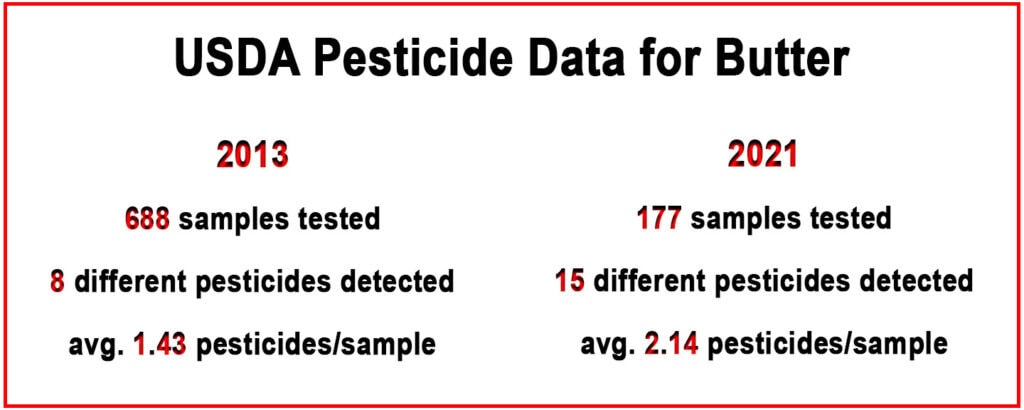
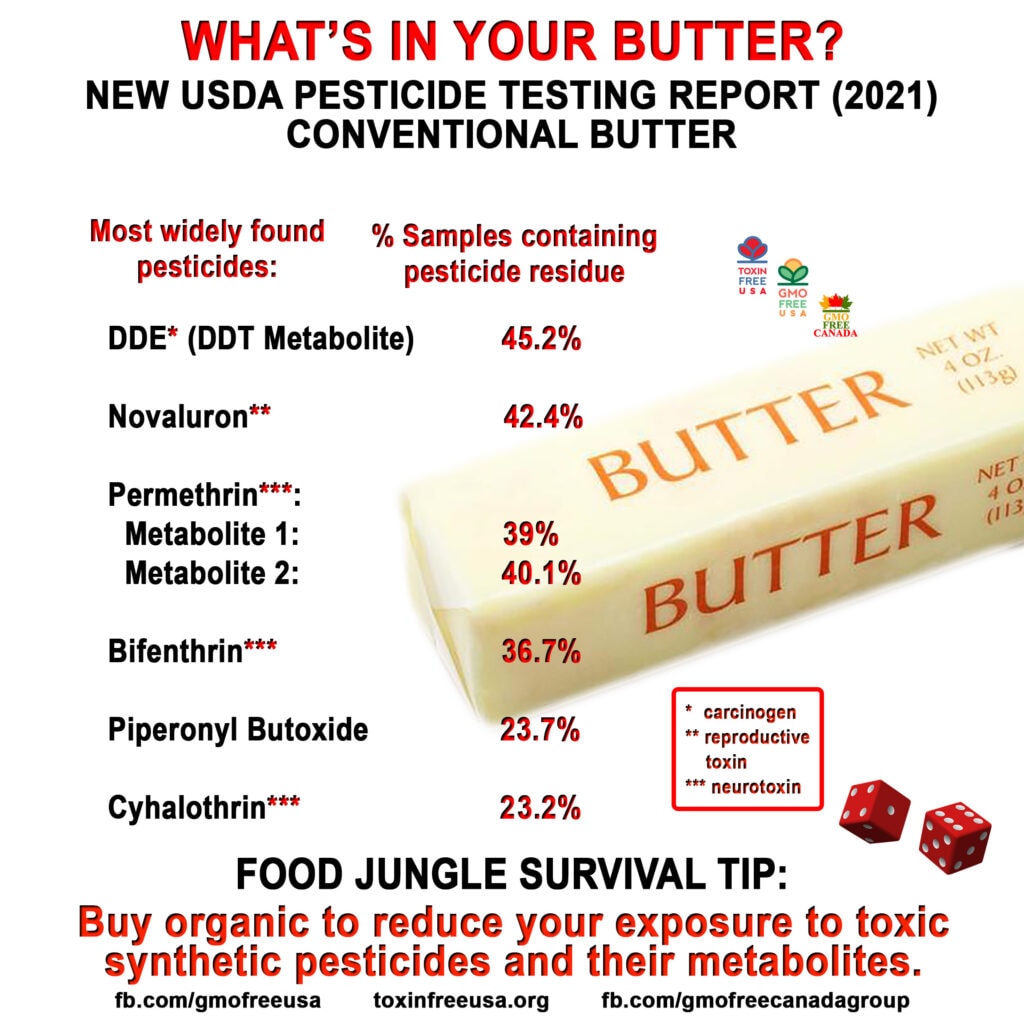
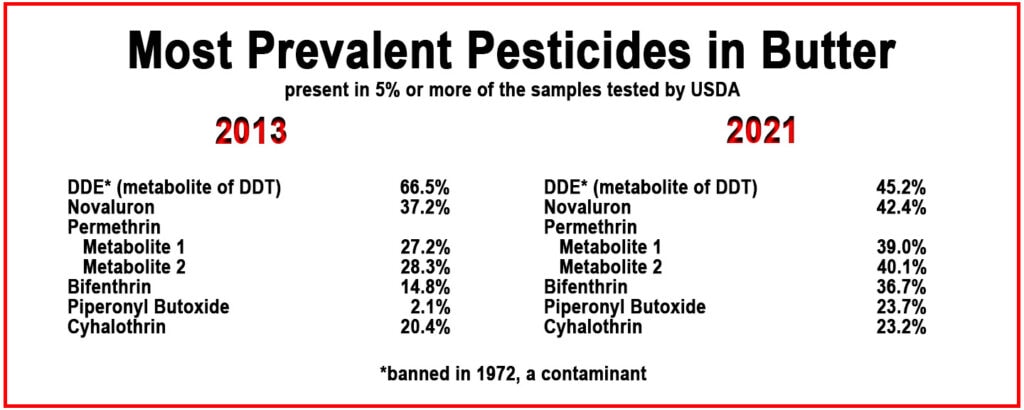
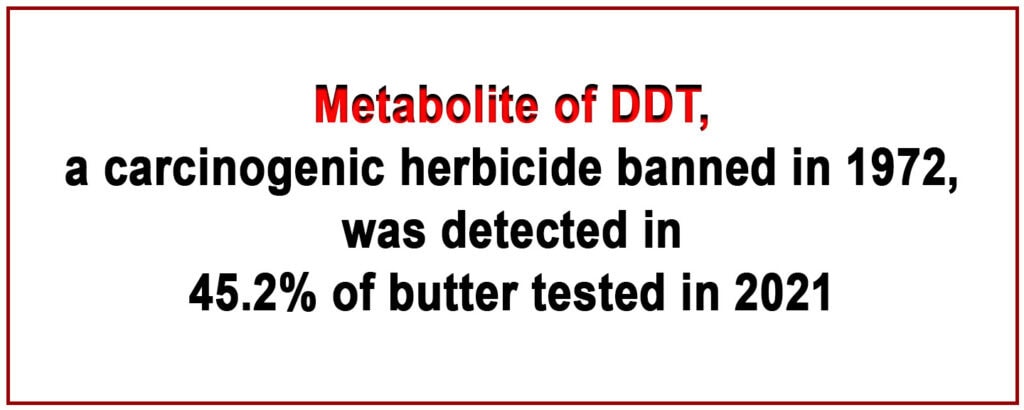
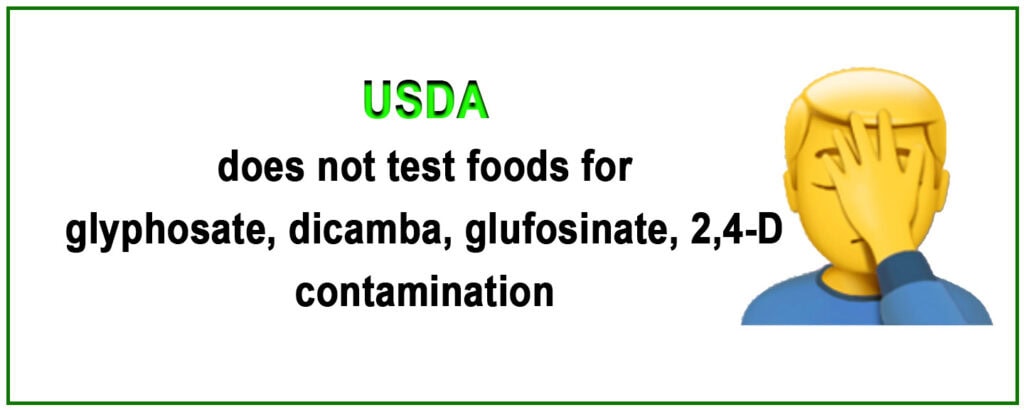

We started buying ONLY organic butter over 20 years ago. But what about pesticide drift? Any organic butter is probably still at least a bit contaminated.
Thank you for this article. I am passing it along to my housemate, who still insists he “can’t afford” to buy organic. Maybe reading this will persuade him that buying organic is the smart thing to do.
Good for you! Remind them they can’t afford to get sick. That is much more costly!
I’d love to see a ‘Dirty Dozen’ and ‘Clean 15’ list of butter brands! Thank-you for highlighting this.
Yes, I agree, knowing specific brands of good or bad would be helpful.
If nothing else, I’m hoping Consumer Reports Magazine will soon test toxins in butter and also cooking oils. Not sure how many here actually read the Consumer Reports articles on the toxicology findings in popular baby foods, and also chocolates… but the study (for both conventional & organic offerings) was very disturbing :'( :'( :'(
Agree. What about the called grass fed butter options?
Pesticides are absorbed by the ground and grass. The worst of the worst of you look at it from a common sense point of view
Me also – I used Irish butter but recently read something not good about that too. I don’t use it much.
I also buy organic – everything I can that’s available. I’m interested in seeing how contaminated organic butter is, Because of their ubiquity, pesticides are almost surely in organic products as well.
Of course they are. Cattle drink contaminated water, which is full of everything toxic under the sun!
Here’s to hoping Consumer Reports Magazine will test toxins in butter and also cooking oils, sometime in the near future(!) Side note, not sure how many here actually read the Consumer Reports articles on the toxins found in popular baby foods (and also chocolates) but the study for both conventional AND organic offerings … was pretty dm disturbing :'( :'( :'(
Consumer Reports is an excellent source for this sort of information–IF one can afford it!! I have found what I have labeled the working class/poor man’s Consumer Reports that I trust more than CR, and have come to rely on: mamavation. Items are thoroughly vetted and tested; grouped into good, better, best, superior with reasons why the product was placed in a particular category; whether responses to questions about quality testing for toxic chemicals, “forever chemicals”and manufacturing quality control, etc. were disclosed or not.
It really make me sick to see how much the greed in politics is controlling every aspect of our lives, including population control!! I would really love organic foods to be tested next! If we can’t trust what they say about gmo food, Why should we trust that something says it’s organic? How organic is it really?
Is there a listing of the actual AMOUNT of each pesticide per 1# butter in addition to the tolerances? I’ve been looking through the maze of data from the EPA, and can’t find a recent report that includes amounts of pesticides compared to the given tolerances.
Recommendation :
Switch to an organic vegan butter such as Miyoko’s.
Better for cows, better for the planet, better for your health. ( used in moderation, of course.)
There will come a day when not just 90% of foods have been contaminated but all of the earth will be rotten and babies born naturally will be a rare occurrence. My wife of 10 years was diagnosed with endometriosis which is a fancy way of saying she was allergic to pesticides. I refused to let them take her uterus in an attempt to make the pain go away. I convinced her to give me a month to figure it out… I read every book, forum, horror story I could find and it boiled down to the fact that roundup/pesticides mimics estrogen and fit into the estrogen receptor better that natural estrogen and causes the body to do what it normally does but at a very accelerated rate. It causes the lining of the uterus to grow outside of it and wrap/grow around organs like the liver and kidneys.
Long story shortened up a bit. She went from crying on the couch doubled over in pain to joining the fire academy and never hurting again. All thanks to organic foods.
Just to mention that during this time she convinced me to eat organic but not out of thought for my health but for her grief of cooking 2 separate meals. I for a fact know that I felt younger, clear headed, motivated, had energy without coffee and to top it off I broke out in acne from head to toe for a month when I switched to all organic like I had puberty at 31 years old.
Recently I read that the packaging used to wrap butter quarters has toxicity as well. I think I will get some raw milk and make my own butter and store it in glass!